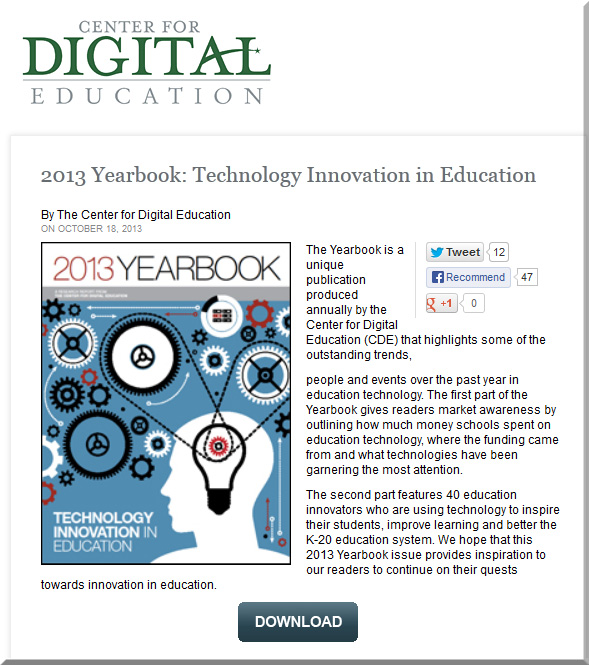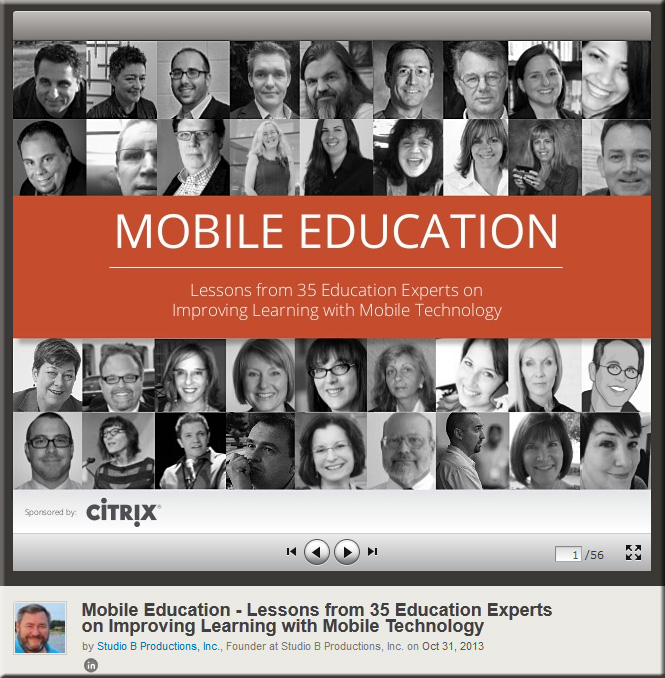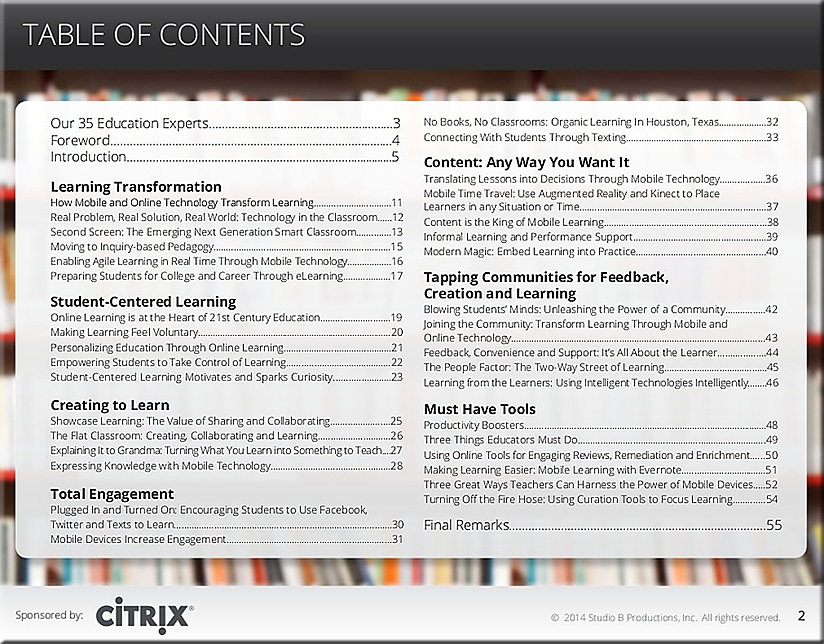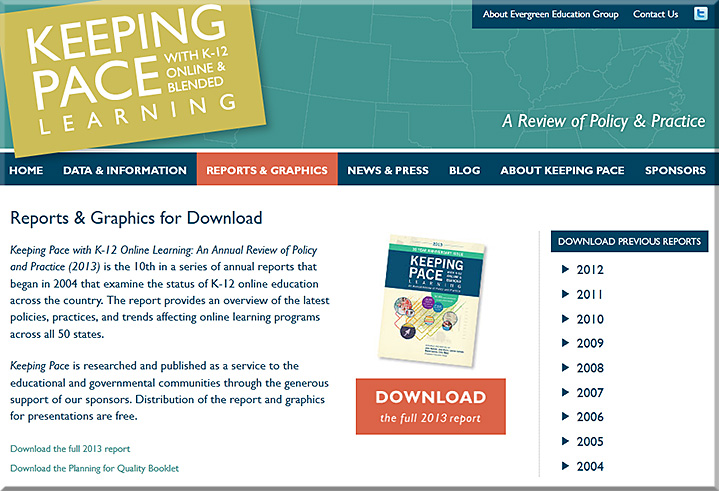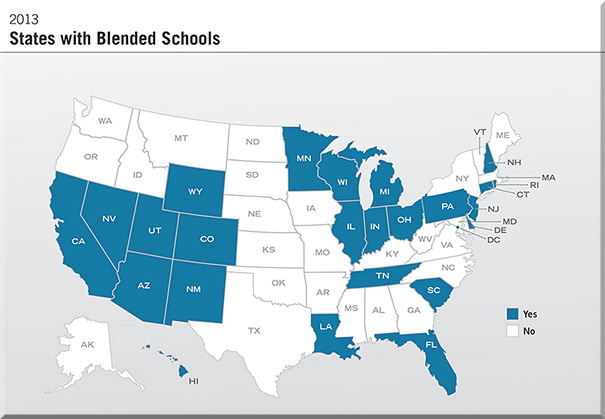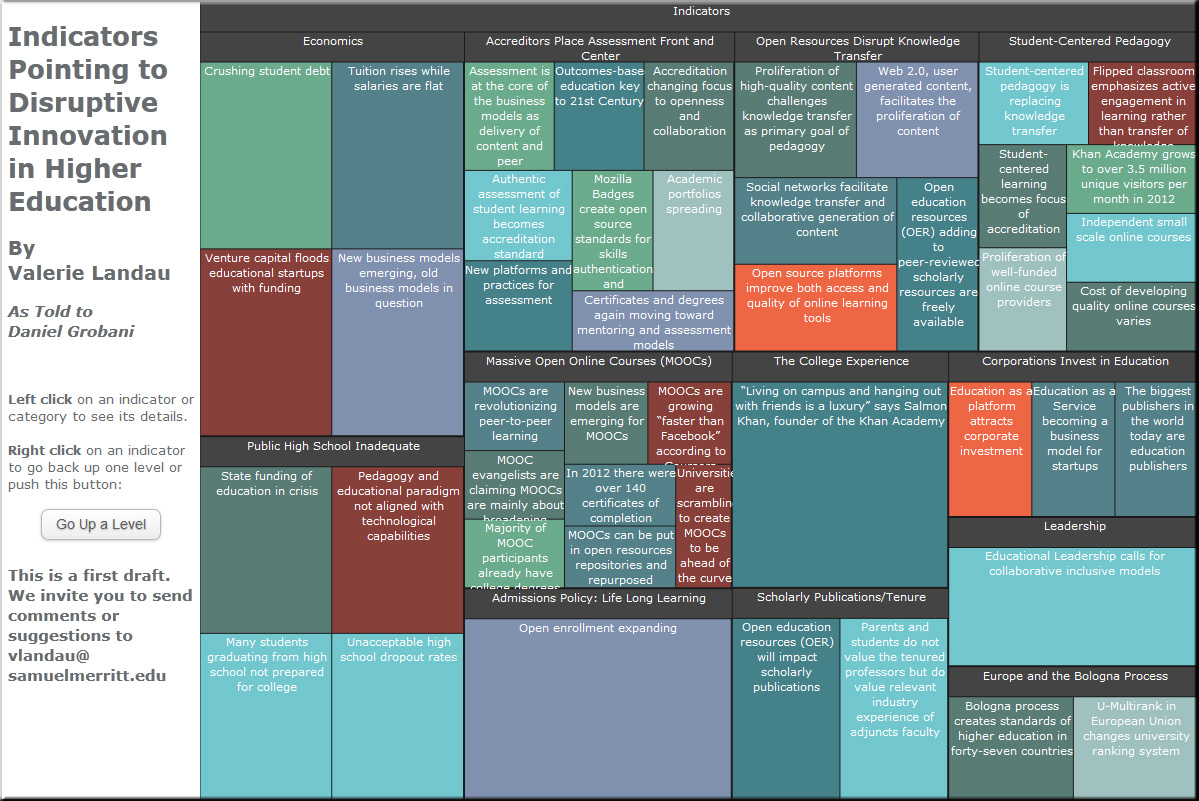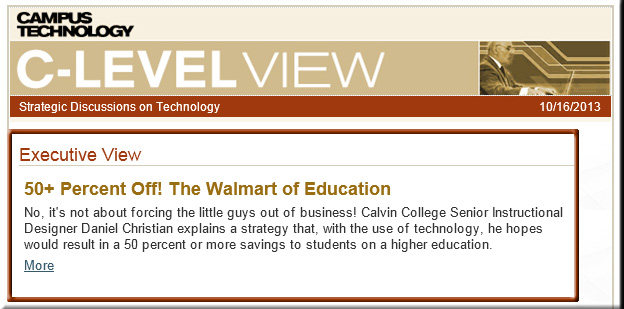Faculty Coalition: Forget About Cost Savings with Online Programs — from CampusTechnology.com by Dian Schaffhauser
Excerpts:
Cost savings promised by the expansion of online education are tough to pinpoint, including those programs that promise to be free for students.
…
According to the Campaign, there are no guarantees that online courses save students money.
…
The Campaign declared the idea that MOOCs could lower the cost of college degrees a “pipe dream.”
…
But even as public institutions introduce their own online programs, they frequently charge students more for those courses, the report said.
From DSC:
(Dian, these thoughts are not aimed at you. Keep up the excellent work out there!)
The only way that online education costs as much as a face-to-face offering is if such a course/offering is ***highly*** sophisticated — that is, that it incorporates a ***significant*** amount of programing, educational gaming, deep analytics and sophisticated reporting, home-grown animations and/or simulations, etc.
Otherwise, there is no way in the world that an online course costs as much to produce and offer as a face-to-face course. Consider two key things:
- Ask any Director of Physical Plant to lay out their annual budget and expenses ***just to keep their campus(es) up and running*** — let alone enhance them further — and you’ll quickly see what I mean!
- In many cases, the infrastructures already exist to serve the face-to-face students (i.e. systems like the CMS’s/LMS’s, Student Information Systems, etc.). So offering online courses only serves to increase the ROI for this infrastructure. (If one couldn’t use the existing systems, then I could see where there would be additional expenses; with that said, the bottom lines are still not the same.)
Many colleges and universities are using the increased demand for online courses to keep the prices up; they are not passing along the savings to the students. (BTW, for those who claim higher education isn’t a business, how do you explain this? The argument that higher education isn’t a business holds no water at all; such viewpoints can no longer be taken seriously.)
By keeping the costs of online courses as high or higher than F2F courses, such colleges and universities are making a big mistake. By doing so, they are only causing the existing bubble in higher education to expand even further. It will pop. In fact, with the increased use of incentives and lowering the tuition that’s actually being paid by the students (vs. the “list” price), one can’t help but wonder if the bubble hasn’t already popped at many colleges and universities.
We need to start passing along more of the savings to our students. I can’t think of a good reason why everyuniversity and college in the U.S. should not offer a spectrum/variety of pricing structures. If you want to take a face-to-face course, you will need to pay more for that course, as there are greater expenses involved in providing that type of learning environment.
Last thoughts:
- While I think that MOOCs are half-baked, they continue to improve.
- If MOOCs morph into something that uses technologies like IBM’s Watson, that will be a game-changer for sure. We will still need SME’s, but the prices that can be offered will be drastically less. See this recent posting for further thoughts on this perspective.









